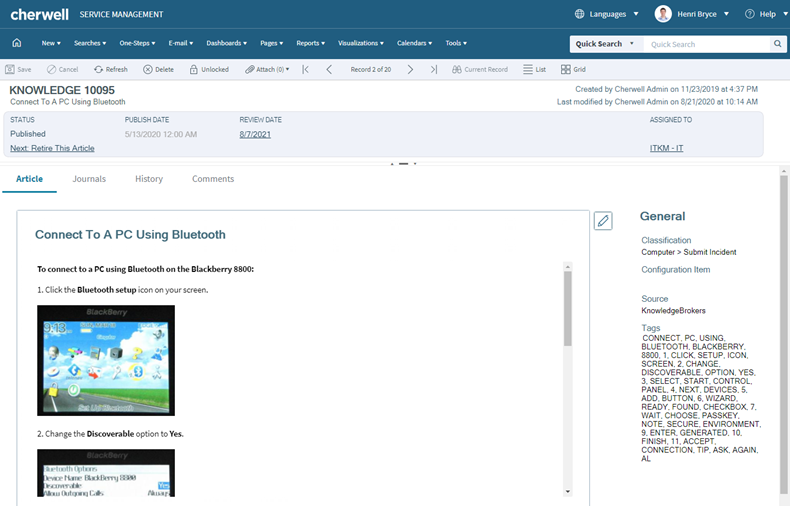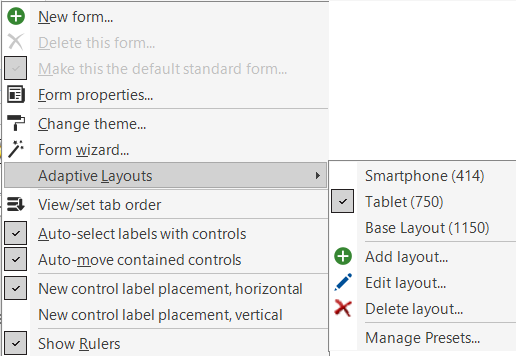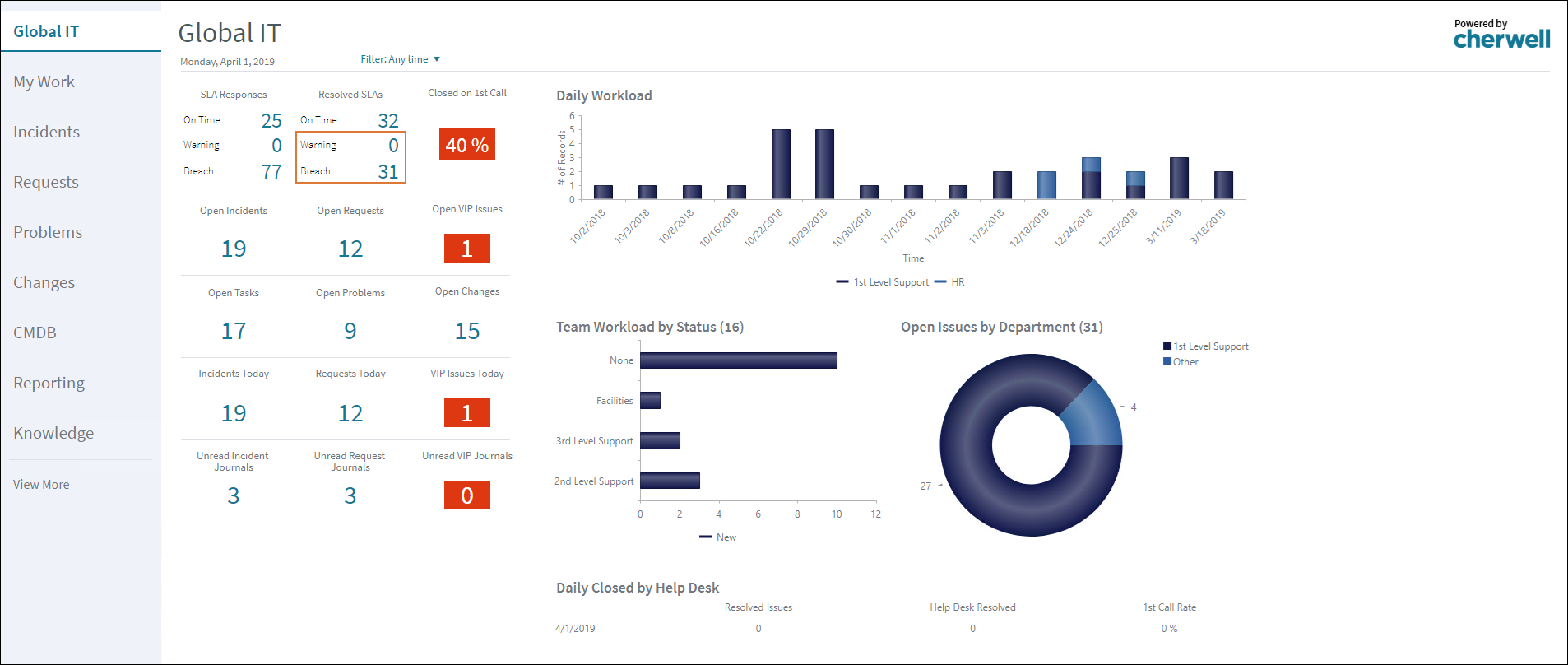CSM Features
CSM provides a variety of configurable features, including Business Objects, dashboards, One-Step™ Actions, searching, reporting, and knowledge management.
Make CSM work for your organization through record management, supporting functionality, automation, security, and business intelligence.
Data Building Blocks
Business Objects are definition-powered business entities that store data to help organizations manage their various workflows and business processes. For example, the Incident Business Object embodies everything about an Incident (who initiated it, how it is categorized, to whom it is assigned, etc.). Use Business Objects as-is, or customize or create your own by building fields, forms, relationships and more.

Leverage Supporting Functionality
Cherwell knowledge management captures, federates, reconciles, and translates real-time IT infrastructure information to create a single trusted knowledge base of actionable intelligence that lets you and your business users solve problems quickly and efficiently.

A Blueprint is a working copy of changes to your CSM system definitions (Business Objects, fields, forms, grids, etc.) that allows you to make offline changes and then publish them to your live system later.
Use mApp® Solutions to create, share, and install bundles of functionality (Business Objects/fields, forms, grids, relationships, Actions/One-Step Actions, saved searches, etc.) across databases.
CSM provides a mighty search engine and a host of search tools to help you efficiently and thoroughly search and filter your data to locate a specific record or a set of files.
Simplify via the Automation Engine
One-Step Actions, built into CSM, allow you to create simple or complex workflows without coding or scripting. With One-Step Actions, you can initiate one or more defined actions, such as sending email notifications, prompting knowledge article review, changing the status of records, warning staff of untouched tickets, and more. By utilizing One-Step Actions, you can automate processes without relying on costly development resources, allowing your team to deliver services more quickly and cost-effectively and freeing up staff to focus on more strategic initiatives. Action Blocks are reusable sets of Actions you can use in One-Step Actions across your Business Objects.
Use Adaptive Layoutsto design forms and dashboards that adapt to different dimensions, providing optimal user experiences across a range of devices.

Tokens are dynamic values that control the interpretation of information and display throughout the system. Use these defined values when designing forms, dashboards, Automation Processes, One-Step Actions, and fields.
Secure CSM
CSM security is robust, granular, and set in layers to secure people, functionality, data, environment, and sharing. Use security groups, roles, and workgroups to tailor access to your data.
Analyze Business Intelligence
A dashboard is a configurable, interactive, and insightful console capable of initiating commands and Actions. Dashboards provide real-time, at-a-glance information through the use of filterable, configurable widgets (Action Catalogs, web sites, buttons and links, and Twitter feeds). Use a dashboard to monitor critical metrics, analyze and predict trends, drill down into data, initiate commands and actions, or display information that might be relevant to a group of users/customers.

Use reports to format and export large amounts of data in the system at a particular point in time. Some of the criteria used to select data can be entered each time a report is run, so you can reuse the report to generate data for different time intervals. You can also schedule reports to run at specific times automatically.